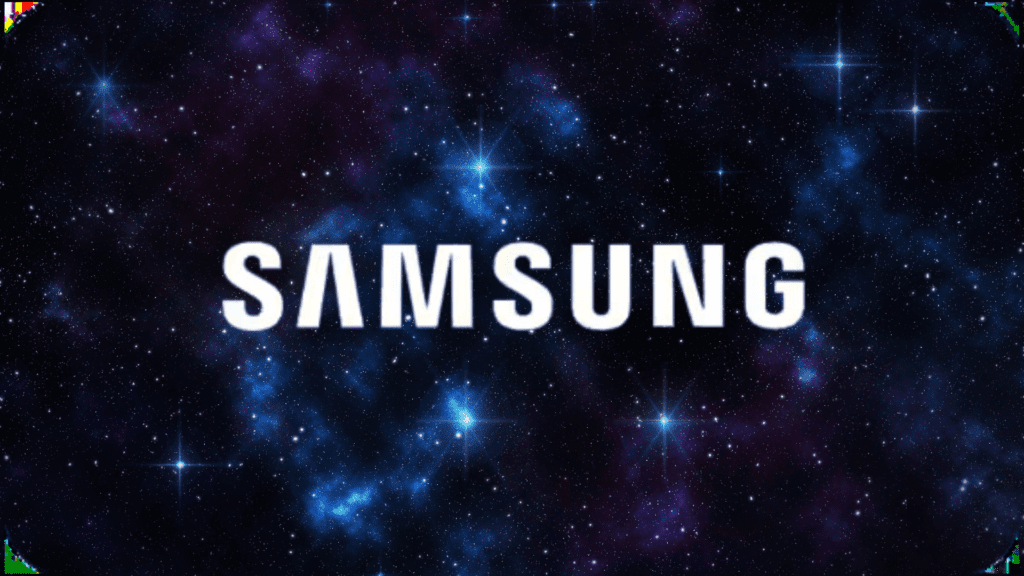Customer is the king, is an old saying for marketing world. Samsung is taking a little longer to accept this reality. Well against all odds, I am not of the opinion that something really bad is happening with Samsung at the moment. I have been maintaining these are transitionary periods where brands take an orbital shift and is bound to take a dip from market performance standpoint. I held similar views for Xiaomi and we have seen it now getting back on track. I see Samsung from a similar prism.

For me Samsung is the only brand after Apple which has positioned itself successfully as a value brand than volume brand. This means a shift in many ways. Firstly, it means taking an exit from the mass market, or substantially reducing exposure to the mass market. Obviously, when such a strategic decision is taken, the company does expect there will be reduction in market share by volume. But then, there might be a counter argument, as to why is Samsung also taking a pinch revenue wise? Despite them having better ASPs compared to others? Well despite this, Samsung is still growing 18-20% by revenue if we compare it with last year. However, it has been growing 22-25% otherwise. This revenue eat up is by Apple which is seeing unparallel growth in the Indian market. Now the market gets a third dimension – Google Pixel. Google seems this year to be a bit aggressive as they have at least expanded their touch points. But on product discovery, I still feel they are a bit shy. Though this year again, they are doing much more by Google standards.
So, in the premium segment that directly affects Samsung’s revenues, there is growth of Apple and now increasing presence of Google Pixel that should bother Samsung. Now what should it do? Obviously, the internal Samsung think tank must be huddling on this and they will formulate a strategy essentially as the new iPhone launch dates are now announced. But here are some of the points that I would recommend Samsung leadership in India to grow stronger in the premium segment.
- The premium segment user is highly concerned and bothered about data security and privacy. Talk to any iPhone user who is the primary target user of an iPhone, security and privacy assurance of iPhone is among the top 3 reasons of buying an iPhone for them. Samsung has Knoxx as a platform, or we can say an additional layer on top of the Android OS to offer extra layer of protection for its users. But, rarely has it conveyed the Knoxx benefits and features to consumers in an elaborate way. There has always been a passing reference about the device being protected by Knoxx. Samsung needs to do deep learning sessions for its target audiences around Knoxx. Especially, its Z and S series target audiences. That’s what parallels to iPhone.
- Samsung needs to decouple S series ultra launch with that of the other S series models. The reason is simple. The ultra series smartphone takes all the limelight. Everyone – influencers, reviewers, bloggers and tech media, all talk about ultra edition to the extent of cannibalising the attention of other S series models. Also, if Samsung can launch ultra series in one half of the year and other models in another half, this will give some longevity to S series in terms of share of mind, attention and newness to offer. Samsung has to accept or for that matter any other brand that no phone has been able to create a pull or desire of the kind of iPhone. So, even if we have essentially, iPhone launched once a year, its sales interest remains high all through the year cohort after cohort. Even when the latest one is launched, there is another cohort of users who gets interested in the previous edition as the prices are further discounted making it accessible for them. That’s not the case with Samsung phones or for that matter any other phone. Look at how other brands changed this ‘Apple behaviour’ for their product launches. At one point, OnePlus used to have only one model launched annually. Gradually it spread throughout the year to be able to offer to consumers something new all through a calendar year. This I am referring to without Nord portfolio. Similarly, the youngster brand Nothing, also started with single model, but soon realised they need to have more to offer. No consumer in today’s time will be able to remain focused on a single model all through the year. From the brand’s perspective also, there isn’t much they can do to excite the audiences. Take for example the S series portfolio. It’s been now sometime since these were launched. What can the brand do to excite the audience except for launching promotional schemes and offers, which again become mundane after a period.
- The other offering, Z series foldable smartphones will remain a niche segment. Samsung is the category creator here and it understands how much time, money and other resources it will need to invest in building this category and grow it up from an extremely niche category to a broadly niche category. Its not a game of 3-4 years. But still then, it has been able to stir excitement and today we already have 7 brands offering foldable smartphones – fold and flips in India.
Samsung through Z and S series is catering to the luxe (ultra-premium) segment of customers. It has to play an ecosystem game here, and that should be beyond bundling products together. The premium users are high on productivity and at the same time expect a premium experience. Samsung needs to build and drive a strong narrative around productivity and premium experience across the host of devices it has on offer to these consumers. Samsung has a smartphone, smart watch, earbuds, laptop, tablet and even a smart TV, not to talk of other consumer electronics like refrigerators, etc., where it needs to think of how it can build and drive this narrative helping high end consumers benefit from being part of the ecosystem. Also, at times, there are limitations within the ecosystem to raise up the value. This is when the brand looks for meaningful integrations for their customer segment. There is again a lot that Samsung can do outside its ecosystem bringing value to its premium consumers. At the end of the day, every consumer evaluates the overall value coming out of the deal. As an example, I have always been saying that foldable phones are for content consumption. Is there any content deal available on Samsung Fold 6? No. Why can’t Samsung bring in exclusive HBR content to Samsung Fold 6 users? Or something of that level.
Now let’s get back to the mass market, where Samsung has competition with two groups of brands – ‘Significant-7’ and ‘Rising/Emering-7’. The Significant-7 other than itself includes Xiaomi, Vivo, Oppo, Realme, Apple and OnePlus. The Rising/Emering-7 brands include Poco, iQoo, Motorola, Nothing, Lava, Honor and CMF. If we look at the market shares by volume, the Significant-7 market shares are stagnated while the Rising-7 market shares are growing up fast. Many of the Rising-7 brands have seen 2-3 times growth in their market share over past few years. Why have these brands been able to do so? It’s not just about 5G. Offering 5G is now a hygiene. These brands asides augmenting trade and operational issues, have been able to ‘tanglibalise’ the upgrade experience perfectly well for the consumers. They have also been able to ‘excite’ consumers with different experiments. For many of us, such things might just be marketing gimmicks leveraging tech. For instance, the glyph lights by Nothing. But that did catch attention of the consumers. Similarly, the colours, materials and designs being introduced by these brands widening not just the choice but also packaging the upgrade elements so well has seen very positive acceptance by the consumers.
Compared to this, if we look at the M and A series portfolios of Samsung, they just look alike in many ways. Most of the times the products will only differentiate on the specs, which does not result in instant realisation of the upgrade and is not noticeable. Samsung had encountered a similar issue around 2012-13, when all its phones where white or black and had the same body language with curved edges. It was very difficult for anyone to differentiate between an entry level J series phone with the S series flagship of that time. In many consumer studies, we had seen that people wanting to buy S series at that time would not find anything exciting visible in them. Even to the extent that some respondents felt that they and their drivers are carrying the same smartphone!
There are several ways of looking at the market. From consumer perspective, one of the views is that consumers buy products for experience or out of excitement. The experience comes at a cost enabled through several technology ingredients, and collaborations and associations with the best in the industry. That obviously makes great experiential smartphones fall in the premium category. But to excite the other half of the market, the mass segments, brands need to do a lot of experimentations and those could appear nasty and irrational at times. They could go against the brand values and guidelines. These could also mean brands taking bold steps and taking a diversion from their long standing ‘style of business’.
The problem with many consumer tech brands including Samsung has been believing in introducing a technology or feature in the premium segment and then leveraging technology and price waterfall, taking them to mass markets. Well, that’s the way it should be. But then the technology cannot be simply ‘imported’ from the premium to mass segments. There has to be naturalisation and adaptation of the technology as per the segment or cohort being served. That needs to change.
It’s completely prerogative of Samsung to define the threshold of the mass market for them. I would not say that they need to be present in sub ₹10,000 market or recommend any other threshold. But they need to carve out an entirely different portfolio for the customers in this category. The portfolio could either be a sub brand like what many others did – Xiaomi (Poco), Vivo (iQoo), Nothing (CMF), are a few such examples or create a strong series presence like Nord by OnePlus, Reno by Oppo, to name some. This will give Samsung room for experimenting to excite the consumers in the segment and at the same time cushion its premium product line that will still have all the values and attributes that Samsung is known for. The ‘Nokia Asha’ era for Samsung has come. It has to carve out a constellation within its galaxy!






One response to “What Samsung needs is to carve out a constellation for the masses within its galaxy of devices”
[…] entry level smartphone market but continues to be serving multiple segments. In my earlier note, I have already recommended what it needs to […]